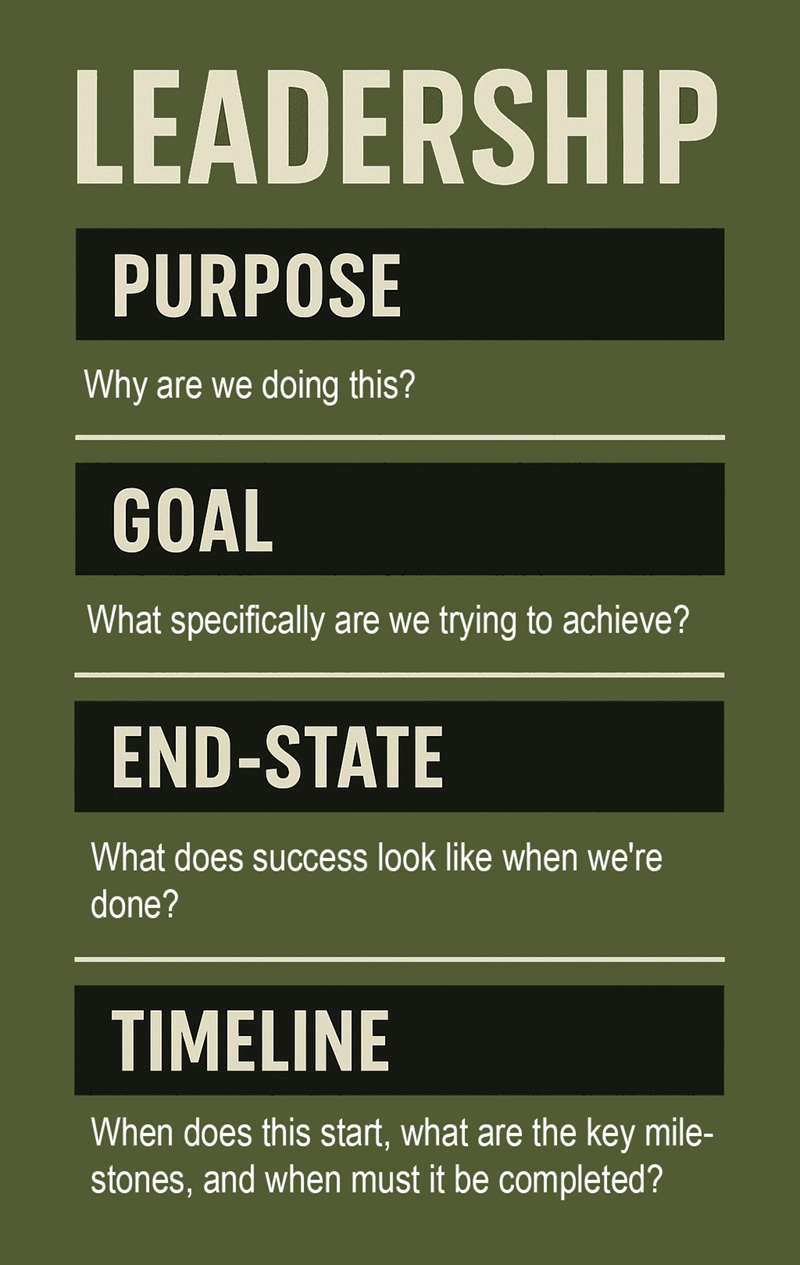TABLE OF CONTENTS
Look, I’m going to be straight with you. The difference between a forgettable manager and a legendary leader isn’t some mystical leadership quality you’re born with. It’s something far simpler yet brutally effective: crystal-clear communication.
That’s right. While everyone else is chasing fancy leadership theories and downloading the latest management apps, the real players know that communication is the damn foundation everything else is built on.
The High Cost of Confusion
Let me paint you a picture. Your team is nodding along in the meeting room. You’ve outlined the quarterly goals, thrown some charts up on the screen, and wrapped it up with a “any questions?” Nobody speaks up. You think, “Perfect! They get it.”
Fast forward two weeks: Projects are stalled. Decisions aren’t being made. Different departments are working at cross-purposes. And that brilliant initiative you were so excited about? It’s on life support.
What the hell happened?
I’ll tell you exactly what happened: When people don’t understand, they can’t execute. Period. End of story.
And here’s the kicker – they won’t always tell you they don’t understand. They’ll nod, smile, and walk out of that meeting room confused as hell.
The Fatal Assumption
Here’s the uncomfortable truth that separates the leadership heavyweights from the amateurs: Don’t assume people know what you need or why it matters. In fact, assume the opposite: they don’t know.
This isn’t about intelligence – you could have a room full of geniuses, and they’ll still misinterpret your directions if you’re not crystal clear. Why? Because they can’t read your damn mind.
Let me break down why this happens:
- You’ve been thinking about this project for weeks – it’s crystal clear in YOUR head
- Your team is hearing it for the first time – with none of the context and background thinking
- Everyone filters information through their own experiences – meaning they’re hearing something entirely different than what you’re saying
And the real gut-punch? The more complex your business, the worse this gets. Complexity breeds confusion, and confusion kills momentum.
The Missing Link: The Timeline Vacuum
There’s one more deadly sin of leadership communication that’s killing your team’s execution: The Timeline Vacuum.
Picture this: You’ve laid out a brilliant vision. You’ve explained the “why” with passion. The team is pumped! And then… nothing happens. Why?
Because you never answered the most basic human question: “When?”
- “When do we start?”
- “When does this need to be done?”
- “What comes first, second, third?”
- “What’s urgent versus what’s important?”
Without clear timelines, even the most inspired team will drift. Priorities blur. Urgency fades. And that kickass initiative becomes just another “when we get to it” project.
Elite leaders don’t just communicate the what and why – they hammer home the WHEN with crystal clarity.
The Commander’s Intent: Your Secret Weapon
The military has been dealing with this communication problem for centuries, and they’ve cracked the code with something called Commander’s Intent.
It’s dead simple: the purpose, goal, desired end-state, and critical timeline. That’s it.
When a military unit knows the Commander’s Intent, they can adapt to changing battlefield conditions without constant micromanagement. If the original plan goes to shit (and plans always do), they can improvise while still achieving the ultimate objective on schedule.
4 Key Principles:
The same principle revolutionizes business leadership:
- Purpose: Why are we doing this?
- Goal: What specifically are we trying to achieve?
- End-State: What does success look like when we’re done?
- Timeline: When does this start, what are the key milestones, and when must it be completed?
When your team has these four pieces, magic happens. They stop waiting to be told what to do. They start making decisions that align with the mission. They take ownership.
Let me say that again: They. Take. Ownership.
And ownership is the holy grail of leadership, my friends.

SMART Goals: The Leader’s Communication Superpower
Let’s kick this up another notch. The most badass leaders on the planet don’t just set clear expectations – they frame everything through the lens of SMART goals:
- Specific: No vague bullshit. Exactly what needs to happen.
- Measurable: How will we know we’ve succeeded? Numbers, percentages, hard data.
- Achievable: Challenging as hell, but not impossible.
- Relevant: Connected directly to the bigger mission.
- Time-bound: The holy grail – WHEN it starts, WHEN it ends, and the key milestones in between.
That last element – Time-bound – is where even decent leaders fall flat on their faces. They nail the specifics, they’ve got great metrics, but they leave the timeline fuzzy.
And fuzzy timelines create fuzzy results. Every. Single. Time.
Cutting Through the Noise: The 3C+T Approach
So how do you actually do this? How do you communicate with the kind of clarity that transforms average teams into execution machines?
I call it the 3C+T Approach:
-
Clear
Strip away the corporate jargon. Ditch the buzzwords. Speak like a normal human being.
Instead of saying: “We need to leverage our core competencies to drive synergistic growth across our vertical market segments while optimizing customer touchpoints”
Say: “We need to use our strengths to sell more to our existing customers.”
-
Concise
Your team’s attention is a precious resource. Don’t waste it.
Get to the point. The longer your explanation, the more diluted your message becomes. The CEO of a Fortune 500 client once told me, “If you can’t fit it on a sticky note, it’s too complicated.”
Brutal? Maybe. Effective? Absolutely.
-
Compelling
Here’s where most leaders completely drop the ball – they forget the “why.”
Your team needs to understand not just what to do, but why it matters. How does this connect to the bigger picture? What happens if we succeed? What happens if we fail?
When the “why” is compelling, motivation takes care of itself.
-
Timelined
This is the game-changer that separates the amateurs from the pros. Great leaders are OBSESSED with timelines:
- Clear start dates: “This initiative kicks off next Monday at 9 AM – not ‘soon’ or ‘ASAP’.”
- Defined milestones: “Phase 1 completion by January 31st, Phase 2 by March 15th.”
- Unmistakable deadlines: “Final delivery is due April 30th at 5 PM. Not ‘end of April’ or ‘Q2’.”
When timelines are fuzzy, accountability is impossible. When timelines are crystal clear, excuses evaporate.
From Theory to Practice: Communication in Action
Let’s put this into a real-world scenario. You’re launching a new customer service initiative. Here’s the difference:
Weak Manager Approach: “We need to improve our customer service metrics this quarter. Let’s try to reduce wait times and increase satisfaction scores. I’ll send an email with the details.”
Elite Leader Approach: “Listen up. Our customers are waiting an average of 12 minutes for help, and our competitors have cut that to 3 minutes. Every minute we make them wait, we lose their loyalty. Our mission is to cut wait times to 4 minutes or less within 30 days. We’re launching this initiative next Monday, October 3rd. By October 17th, I want wait times under 8 minutes. By October 31st, we hit our 4-minute target. When we nail this, our customer retention will jump by at least 20%, worth about $2 million annually. This isn’t just about metrics – it’s about showing our customers they matter. Questions?”
See the difference? The second approach is clear, concise, compelling, and – crucially – timelined. No ambiguity about when it starts, what the milestones are, or when it must be completed.
The Acid Test: Can They Explain It Back?
Want to know if your communication is actually working? Try this devastatingly simple test:
Ask someone on your team to explain the mission back to you.
Not in a gotcha way, but in an honest “I want to make sure I’m being clear” way.
If they can articulate:
- Why you’re doing this
- What success looks like
- How it connects to the bigger picture
- When it starts and when it must be completed
Then congratulations – you’ve achieved clarity. If not, that’s on YOU, not them.
Moving from Manager to Leader: The Communication Shift
The evolution from manager to leader requires a fundamental shift in how you think about communication:
Managers communicate to direct. Leaders communicate to empower.
Managers give detailed instructions on HOW to do the work. Leaders focus on the WHAT, WHY, and WHEN, then get the hell out of the way.
This shift is scary as hell for most new leaders. Letting go of control feels like jumping out of an airplane. But that’s the paradox of leadership – you gain more control by giving it up.
When your team understands the mission at a bone-deep level – including the critical timeline – they’ll make better decisions than you could ever dictate from on high.
The Leadership Development Secret Nobody Talks About
Here’s the part that might sting a little: If you’re frustrated that your team isn’t stepping up, the problem is probably your communication.
Tough love time: Leaders who complain about their team’s lack of initiative are often the same leaders who:
- Keep critical information close to the vest
- Communicate in vague generalities
- Change directions without explaining why
- Assume everyone sees what they see
- Leave timelines fuzzy with “ASAP” and “as soon as you can” bullshit
Great leadership development starts with great communication. Full stop.
The Weekly Communication Audit
Here’s your challenge (and yes, this applies to you even if you think you’re already a communication badass):
Take time this week to evaluate your communication.
Ask yourself:
- Do I truly understand why we’re doing what we’re doing?
- Have I clearly articulated both the what AND the why to my team?
- Could each team member explain our priorities to a stranger?
- Am I assuming knowledge that might not be there?
- Have I established CRYSTAL CLEAR timelines for every initiative?
Then, do something most leaders never have the guts to do: Ask your team if your communication is clear. Not in a group setting where social pressure kicks in, but in one-on-ones where they can be honest.
You might be shocked at the disconnects you discover.
The Bottom Line
Leadership isn’t rocket science, but it does require ruthless commitment to clarity. When people don’t understand, they can’t execute. So, take ownership of making sure they do.
Cut through the confusion. Eliminate assumptions. Communicate with purpose. And for God’s sake, put a damn stake in the ground with clear timelines.
Do this consistently, and you won’t just improve execution – you’ll transform your entire leadership presence. Your team will walk through walls for a leader who communicates with this kind of clarity, purpose, and precision around timing.
The choice is yours: Continue with the status quo of assuming everyone’s on the same page, or step up and own the clarity of your communication.
What’ll it be?
Vaughn Sigmon is a leadership development expert specializing in executive communication and team performance. With over two decades of experience transforming managers into leaders, Vaughn works with organizations to eliminate communication barriers and build high-performing teams. For more information on leadership development programs or speaking engagements, visit www.rdltraining.com.







